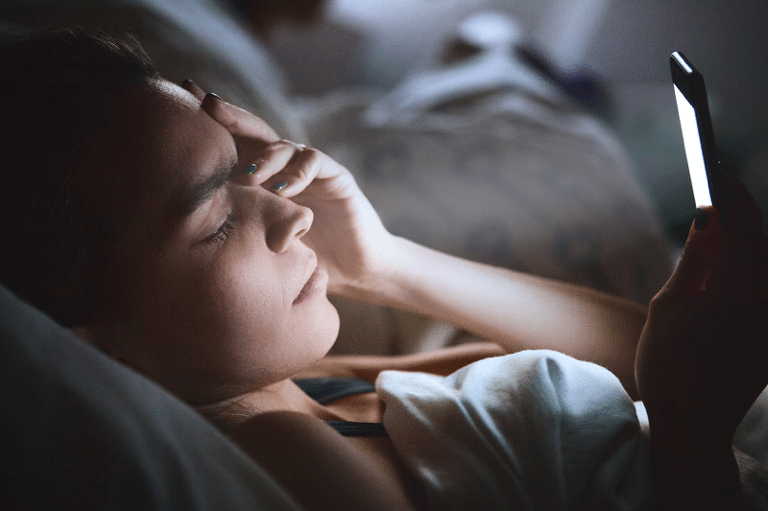Three Steps to a Healthy Relationship with Technology
The digital age is full of surprises. New technologies are constantly popping into our lives. In just the past couple of weeks, we have been introduced to emoji generated playlists, real-time language translation headphones, blood delivering drones (yep, this is a real thing), and wireless charging iPhones (#rejoice). It’s no surprise that we live our lives at hyperspeed, consuming more content than ever before.
Where does technology stop and humanity begin? How do I ensure that I’m allowing technology to work for me versus me being a slave to it (cough, e-mail, tweets, texts)? In these moments, I always pause and remind myself that technology changes every second, but humanity never does. We live in the Jetson’s era, but it’s those that act like both the Flintstones and the Jetsons that are winning.
Technology changes our lifestyles. It allows us to be efficient, but also adds more to our plate.
Fifty years ago, the average adult got 8.5 hours of sleep, while we now average less than 7 hours a night (i). These brightly lit, magical screens and projectors that we are glued to reduce melatonin levels, the hormone that regulates sleep (i). Bright light also decreases leptin, which makes you feel full, while increasing ghrelin, which makes you feel hungry (i). Our devices are making us more sedentary, contributing to our wacky appetites, increasing our waistline and disrupting our sleeping patterns. Yikes. Does this mean we go full Amish and toss our smartphones into the nearest running stream? Certainly not.
Technology is embedded in our lives, but this doesn’t mean we allow technology to shorten our lives either. Here are three things you can do to live a happier and healthier life while still reaping the full benefits from your devices.
1) Let technology help you sleep
Stop using your electronic devices one hour before bed to help you fall asleep faster. Don’t let the blue-and-white lights muddle with your melatonin levels. Years of delaying sleep can mess with your internal body clock. Putting your phone away will also reduce stress, as you won’t be tempted to check email or, let’s be honest, fall into an endless spiral of cat videos on YouTube.

If you must use your device before bed, there are tools to reduce the blue-and-white lights. One of the simplest ways is to enable night mode on your iPhone. Other devices, such as Kindles, also have a night mode that will dim the color tone of your screen. There is also free software for computers, such as f.lux, which will convert a monitor’s color to a soft sepia hue that is easier on the eyes.
Another way to ensure your wellness is by sleeping in a smart bed like my Sleep Number® 360. The bed itself adjusts to my movements, raises my partner’s head when snoring (not that my beautiful bride would ever snore, cough), and its SleepIQ® technology tracks and optimizes my sleep. It’s the perfect bed for us since each side has its own setting that we can adjust every night. So, now the only thing to fight over is the temperature of the room. Can your bed do that?
2) Stand like a superhero
You will feel amazing after waking up in your smart bed, but a couple of hours sitting at work can bog down even the strongest of superheroes. After all, sitting is the new smoking. Prolonged sitting increases your chances of developing cancer, heart disease, and type 2 diabetes (ii). A monstrous appetite and a sedentary work day can lead to sluggishness and obesity.
Motion creates emotion, and emotion creates energy. So, get moving! Take breaks throughout the day to pose like a superhero. You can go all out and start climbing walls like Spider-Man, but simply putting your hands on your hips and straightening your back will do the job too. The key is high power, open, relaxed stances rather than being closed and guarded. This reduces cortisol, the stress hormone, by 25%, while raising testosterone levels for an energy boost (iii). Have a big presentation or job interview coming up? Power pose in the waiting room for a much-needed confidence boost and to intimidate your competition.

3) The 20-20-20 rule
Humans normally blink around 15 times a minute, but when staring at a screen, that number is cut in half, which can lead to dry eyes and headaches (iv). Follow the 20/20/20 rule: stand up every 20 minutes to look at a fixed object 20 feet away for 20 seconds. This will reduce eye strain and make you more productive when you get back to work.
These three steps are small, easy fixes for a big problem. Technology is great, but like all healthy relationships, there needs to be boundaries. We can love technology while loving ourselves too. Live healthy, live longer, and live to see the day that technology comes up with something truly beyond your wildest dreams.
This post was sponsored by Sleep Number. All thoughts are my own.









